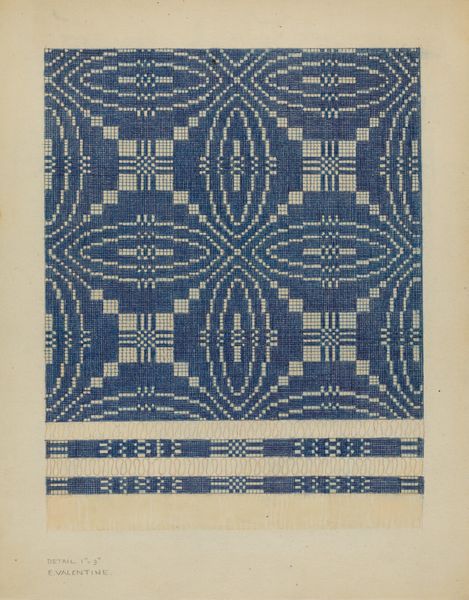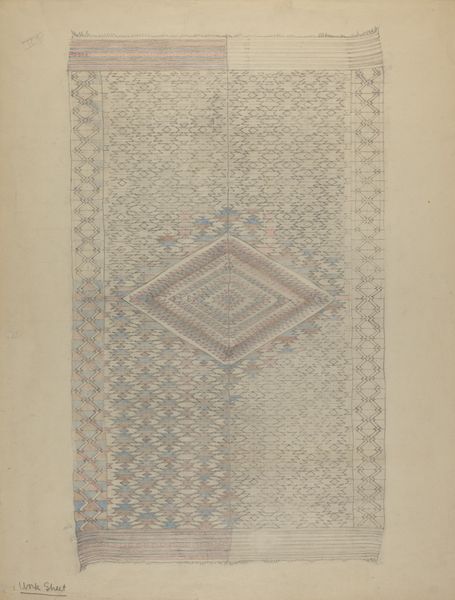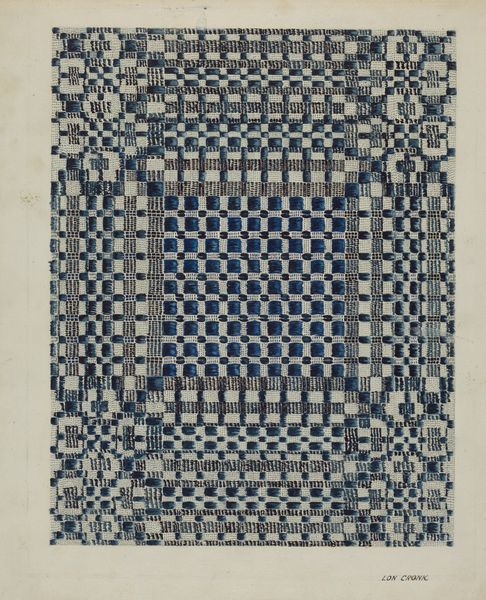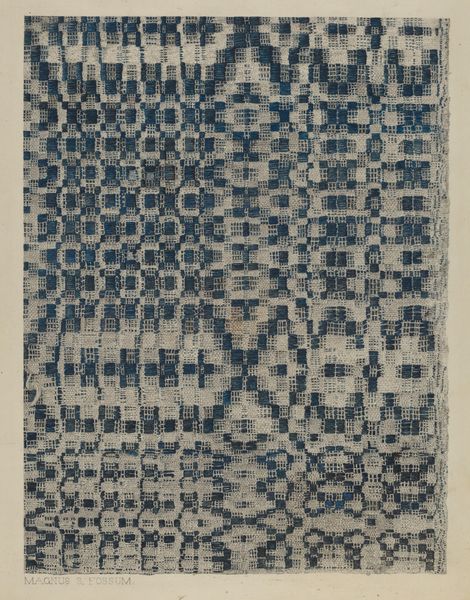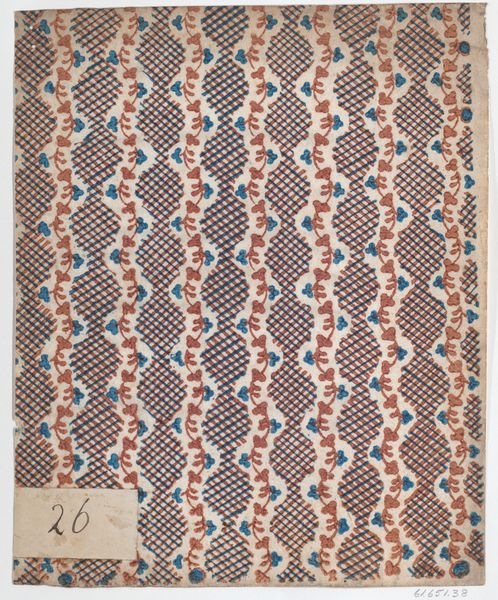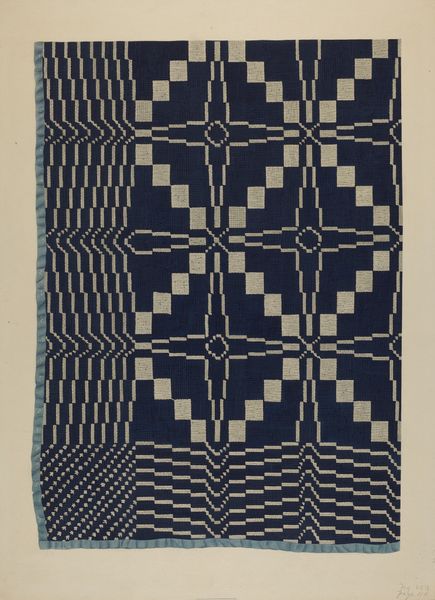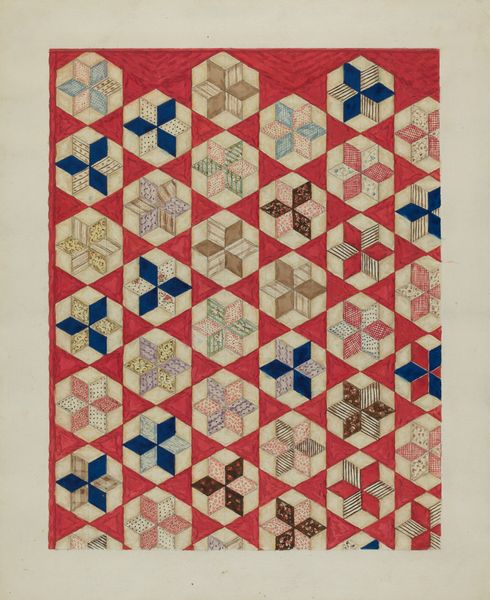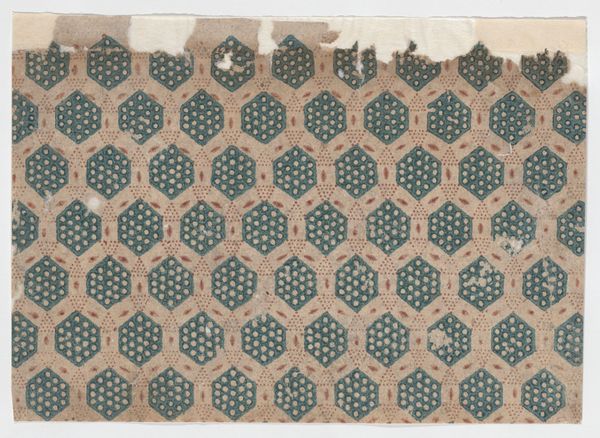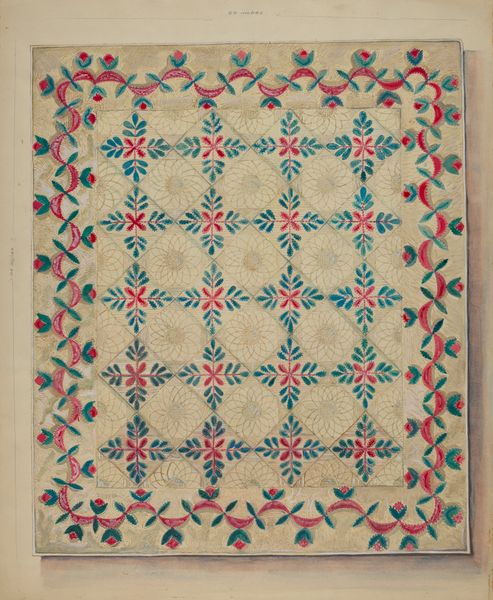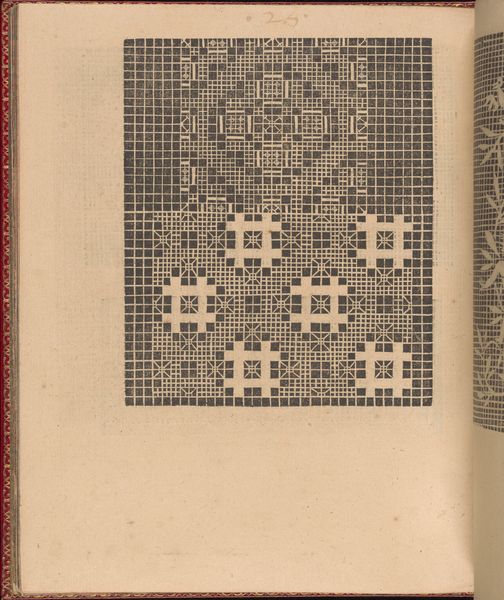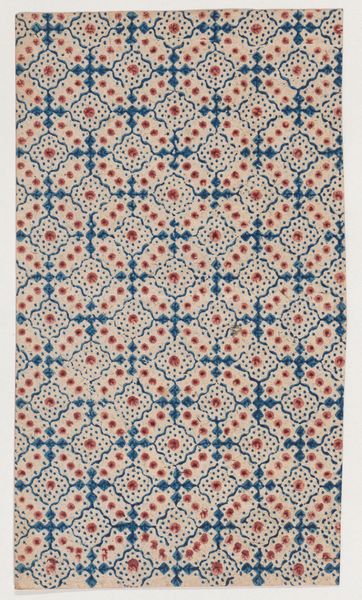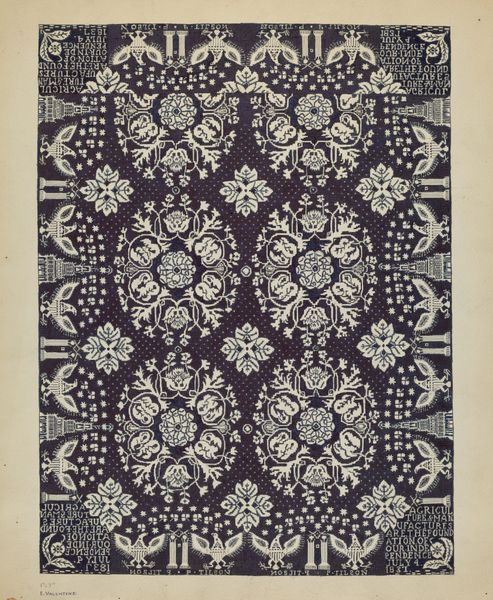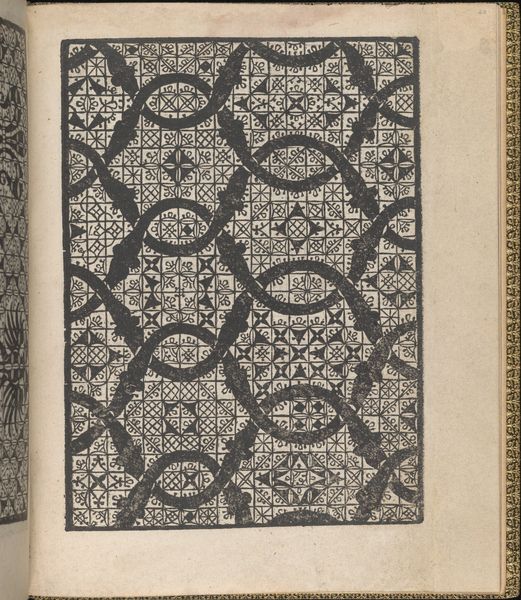
textile
#
natural stone pattern
#
textile
#
pattern design
#
repetitive shape and pattern
#
geometric
#
repetition of pattern
#
vertical pattern
#
pattern repetition
#
textile design
#
imprinted textile
#
layered pattern
#
funky pattern
Dimensions: overall: 59.2 x 50.8 cm (23 5/16 x 20 in.) Original IAD Object: 75" wide; 84" long
Copyright: National Gallery of Art: CC0 1.0
Curator: Here we have a coverlet design from 1936 by J. Howard Iams. It features a detailed pattern design in shades of blue on what seems to be a textile medium. The drawing gives a potential preview of what the manufactured coverlet may look like, as seen from its corner being folded. Editor: You know, the moment I saw it, I thought of my grandmother's quilts, that lovely weight of history and home. But this, it's more of a blueprint. Stargazing through a telescope of domesticity. It's comforting and a little austere at the same time. Curator: Precisely. Textile designs such as these often provided accessible art to a wide public, especially during the Depression era. They offered affordable beauty. Also, the pattern design movement promoted elevating craft to the level of fine art. How does this fit that idea? Editor: Oh, absolutely! It’s repetitive, sure, but it's like poetry—the rhyme and rhythm allow for subtle variations to become really powerful. I'm imagining all the possible imperfect impressions of its making! Little blurs in the blue, or snags of thread, elevating it further through flaws... a meditation revealed through utility. Curator: I see your point about the poetry, but also it's a pre-production drawing, serving utilitarian functions. Think about the cultural context and how accessible such art forms were in terms of gender, class, and geography, specifically during the mid-1930s. Also, there were some efforts to merge fine art and industrial design. Editor: True. Maybe this was supposed to become "high art" but settled for blanketing someone instead? It reminds me that art doesn't always need a frame to be transformative. It can warm your toes on a cold night. Curator: I think that’s a beautifully poignant way to see it. The intimacy of design is just as powerful, sometimes more so, than that of the museum piece. Editor: Absolutely! After all, what's more revolutionary than bringing art into everyday life, literally woven into the fabric of our homes? It certainly changed my understanding of the image in just this short conversation!
Comments
No comments
Be the first to comment and join the conversation on the ultimate creative platform.
